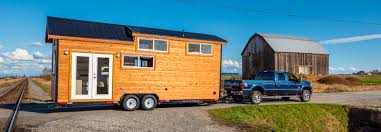


This article explores these crucial elements and how they contribute to a successful off-grid experience.
As the cost of traditional housing continues to rise, many individuals are exploring alternative living arrangements. One popular option is off-grid living in a tiny home. This lifestyle promotes self-sufficiency, sustainability, and financial freedom. However, making a tiny home functional off the grid requires careful planning in three key areas: solar power, water, and waste management. This article explores these crucial elements and how they contribute to a successful off-grid experience.
Living off the grid means disconnecting from municipal utilities, making renewable energy solutions essential. Solar power is one of the most practical and eco-friendly ways to generate electricity for a tiny home. With the right system, homeowners can power their appliances, lighting, and other essentials without relying on external energy sources.
Solar Panels – These capture sunlight and convert it into electricity. The number of panels needed depends on energy consumption and available sunlight.
Charge Controller – This device regulates the power going from the solar panels to the battery bank, preventing overcharging.
Battery Bank – Stores electricity for use when the sun is not shining.
Inverter – Converts stored energy from DC (direct current) to AC (alternating current) for use in standard household appliances.
Determining the right solar setup requires calculating daily energy needs. Homeowners should account for appliances like refrigerators, lights, and heating systems. A typical off-grid tiny home may require a solar array of at least 2,000–3,000 watts to run efficiently.
Reduces dependence on fossil fuels
Lowers electricity costs over time
Provides energy independence
Minimal maintenance required
Off-grid living requires a sustainable water supply. Depending on location and climate, homeowners can access water through various methods:
Rainwater Harvesting – Collecting and storing rainwater is an excellent way to ensure a steady water supply.
Wells – If the land permits, digging a well provides a reliable and long-term water source.
Natural Water Sources – Lakes, rivers, and streams can be used, but they often require filtration and purification.
Storage Tanks – Holding tanks store collected water for future use.
Filtration Systems – Essential for making water potable, systems may include UV purification, activated carbon filters, and reverse osmosis.
Tiny home dwellers must be mindful of water consumption. Strategies such as low-flow faucets, composting toilets, and water-efficient appliances help conserve water.
Handling waste responsibly is crucial for off-grid living. Various toilet options make it possible to live sustainably while minimizing environmental impact.
A composting toilet is an eco-friendly option that breaks down waste into compost material without water or plumbing. These toilets use sawdust, coconut coir, or peat moss to facilitate decomposition.
These toilets burn waste into ash, eliminating the need for water and reducing waste volume significantly.
These options are suitable for those who need a temporary or mobile waste solution. They require manual emptying into approved disposal sites.
Greywater is wastewater from sinks, showers, and washing machines. Managing greywater is essential to prevent environmental contamination.
Filtration Systems – Removes contaminants, allowing greywater reuse for irrigation.
Biodegradable Soaps – Using environmentally friendly soaps ensures that greywater can safely return to nature.
Constructed Wetlands – Some tiny homeowners use plant-based filtration systems to clean and recycle greywater naturally.
Living off-grid often means handling household waste independently. Strategies for reducing waste include:
Composting organic waste
Recycling materials
Repurposing items to minimize landfill contributions
Off-grid living in a tiny home is a rewarding lifestyle that promotes sustainability, independence, and financial freedom. By implementing efficient solar power, water collection, and waste management systems, homeowners can enjoy a comfortable and eco-friendly life. Whether seeking adventure, simplicity, or cost savings, living off the grid offers a unique opportunity to break free from traditional housing constraints.
For those interested in affordable options, there are tiny homes on wheels for sale under $10,000, making off-grid living accessible even on a budget. By carefully planning and investing in the right systems, anyone can enjoy the benefits of sustainable, off-grid living in a tiny home.
